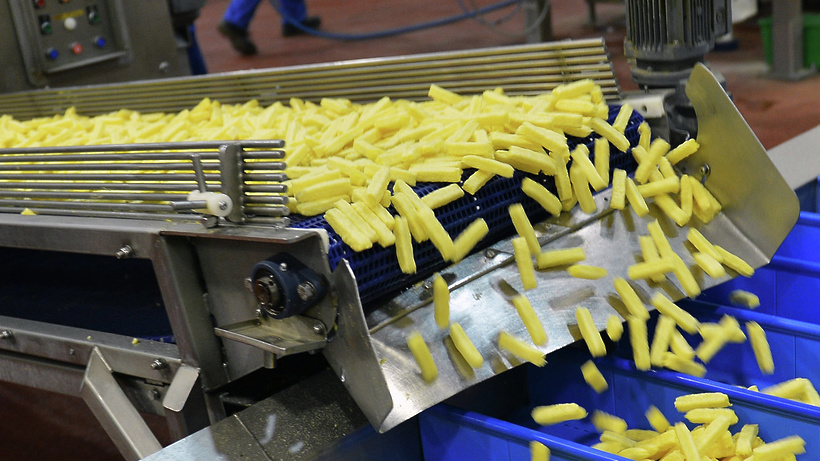The food processing industry has come a long way over the past century. Machines now handle tasks that were once done entirely by hand, improving efficiency, consistency and food safety. One area that has seen tremendous advancement is the production of French fries – America’s favorite snack food. Let’s take a deeper look at how French fries processing has evolved.
Washing and Peeling
The first step in French fry production is thoroughly washing and peeling the potatoes. In the early 1900s, this was an labor-intensive process done entirely by workers scrubbing and manually peeling potatoes with knives. The introduction of potato washing and peeling machines in the 1940s automated much of this task. Modern machines can now wash over a ton of potatoes per hour using high-pressure spray jets to blast away dirt. Peeling is also achieved rapidly using rotating abrasive surfaces or blades that gently remove the skins. This initial processing stage sets the potatoes up for consistent downstream cutting and ensures any dirt or debris is fully removed.
Cutting and Slicing
Once potatoes are clean, the next operation is cutting them into fry shapes. Early methods involved manually slicing potatoes with knives on cutting boards. By the 1920s, the first mechanical potato slicers were invented using rotating blades to achieve uniform cuts faster. Continuous advancements since then have produced highly automated slicing lines. Today’s state-of-the-art French fry processing plants employ powerful cutting machines that can slice thousands of pounds of potatoes per hour into precisely cut strips or planks through multiple sharpened steel blades spun at high speeds. Blade designs and configurations can be easily adjusted to produce different cut sizes to suit customers’ needs. Automated slicing dramatically increased production capacity and cut consistency versus hand methods.
Blanching and Par-Frying
After slicing, potatoes are subjected to an initial blanching and par-frying step. This ‘par-cooking’ process pre-gelatinizes the potatoes’ starch content for optimal crisping during final frying. It also sterilizes the exterior while still leaving the interior partially uncooked. Early 20th century methods involved manually blanching chips in large vats of hot oil. By the 1950s, continuous fryers were invented using conveyor belts to move slices through hot oil instead of batch frying. Modern par-fryers achieve strictly-controlled time, temperature and product flow automation. Slices enter fully automated stainless steel kettle systems and travel through precisely heated oil for a few minutes, then exit onto conveying for a final blanch. This par-cooking stage is crucial for achieving the light, fluffy texture customers expect.
Freezing
After blanching, fragile hot fries must be quickly frozen for stability during packaging, distribution and final cooking. Early processors had to manually bag chips in small batches for freezing in cold storage rooms. By the 1940s, continuous band or fluidized bed freezers using cryogenic liquid like liquid nitrogen were introduced. Now, state-of-the-art freezing technologies like spiral freezers can rapidly freeze thousands of pounds of blanched fries down to -20°F in just a few minutes using cryogenic gases. This flash freezing suspends moisture and prevents bacterial growth. It also allows pre-frozen chips to be warehoused and shipped long distances for on-demand final frying worldwide. Precise freezing is key to locking in quality and shelf life.
Packaging
Once frozen, individual potato slices, shoestring or steak fry cuts must be counted, measured and securely packaged for protection and freshness until final cooking. Early 20th century processors hand-filled and sealed small bags, which was laborious and inconsistent. By the 1950s, fully automated vertical form-fill-seal (VFFS) packaging machines were invented using roll stock film and precision form, fill and cut/seal operations. Today’s high-speed VFFS lines can package hundreds of pre-portioned bags of perfectly counted and formed fries per minute at rates up to 300 bags/minute. Sophisticated controls ensure precise weight fills and hermetic seals to maintain moisture and microbe control until cooked. Trays, boxes and other formats are also automatically erected, filled and sealed at high speeds.
Quality Control and Frozen Storage
Throughout the manufacturing process, stringent quality control measures are implemented to ensure safety, consistency and customer satisfaction. Critical control points are built into each operation from peeling to freezing to detect contaminants, off-spec cuts or product issues. Final packaged fries enter frozen warehouse storage designed for extended shelf life where they are kept at ideal controlled temperatures from -20 to 0°F until called for distribution. Computerized inventory and lot tracking systems maintain full traceability. Periodic quality audits and finished product testing protocols protect brand reputation and deliver consumer confidence with every serving.
Customized Cutting and Cooking Solutions
As demand diversifies, equipment engineers continuously refine fry processing systems. Modular designs have flexibility to produce array of custom cuts from shoestrings and wedges to crinkle and lattice styles. On-board cameras can even inspect and sort cuts. Continuous and batch cooking technologies allow pre-programmed or changing final cook profiles tailored by customer needs from quick service to restaurants. Systems integrate fully automated handling from raw material to cooked, frozen or par-fried finished goods made consistently perfect. French fry production innovation perfected an American favorite while ensuring the highest safety, quality and waste-reduction standards for a bright future.
In conclusion, over the past century, the mechanization and refinement of integrated French French Fries Processing Machines systems has revolutionized America’s snacking potato industry. Advances in washing, peeling, slicing, par-frying, freezing, packaging, quality assurance and customized cooking solutions now reliably mass produce consistently perfect fries at unmatched scales of production. This evolution delivers the high quality end products consumers expect while improving efficiencies, minimizing waste and helping optimize the entire potato value chain for generations to come. Continuous innovation will ensure potato snacks remain one of the world’s most beloved and accessible packaged foods.
*Note:
1. Source: Coherent Market Insights, Public sources, Desk research
2. We have leveraged AI tools to mine information and compile it




